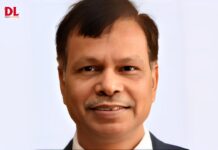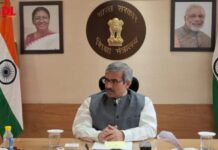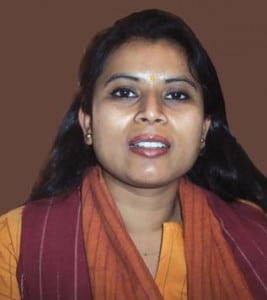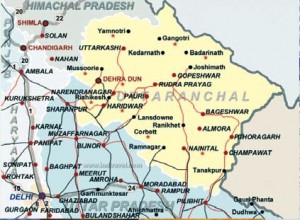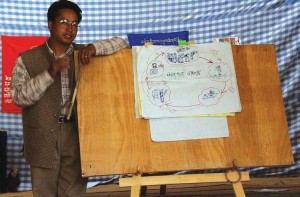 HP unveils pen keyboard for Indian languages
HP unveils pen keyboard for Indian languages
HP Labs India has introduced itspen-based keyboard for Indian languages, including Devanagari (Hindi), Kannada and Tamil. Priced at Rs 2,000, the gesture-based keyboard helps solve the phonetic language entry problem by allowing users to input text and data with a pen. The innovative technology also
allows any Indian script to be recorded and stored directly on the
spread over a year and every student is handed a scholarship of Euro 17,000 for the whole year. Since education at a European university is free, this easily supplements a student for his or her living expenses during the year. 130 Indian students have been handed scholarships in the first year. ‘Talking library’ records success in southern India Unlike in the West, audio libraries are rare in India, and “talking books” are rarely available in shops. And in such a situation, 46-year-old Madhu Singhal, herself visually impaired, runs an audio library of 16,000 works in the southern Indian city of Bangalore. Madhu’s library has audio books in English and two Indian languages, Hindi and Kannada. It started when her brother-in-law bought her a tape recorder and encouraged her to do
something for the blind. She depends entirely on volunteers to help with the recordings, who is also a founder of the Mitra Jyothi (Friendly Light), a city-based nongovernmental organisation. Two recording rooms at Mitra Jyothi’s office are the hub of the library. Volunteers – from young students to housewives and the retired – lend their time and voices to record for the blind. For a nominal sum of 10 rupees, the visually impaired can enrol as members. With word about the library spreading, students from neighbouring southern states have begun INDIA News computer. The hi-tech keyboard makes it easier for even non-English speaking people and those who can’t type to communicate with others effortlessly. Designed and developed at HP Labs India, the keyboard is currently available in Hindi and Kannada scripts along with English fonts. demanding audio books in their native languages. The library’s success has motivated Madhu to start a computer centre and an employment centre for the disabled. Her efforts to get government
Red Hat and Lotus Learning in India to promote open source education in schools
The Nasdaq-listed Red Hat, an open source software provider, has announced its partnership with the southrn Indian city Hyderabadbased Lotus Learning Systems Society to promote open source education in schools.
Village school children go online in India
Arul Mozhi, D. Deepa and K. Maunika are first generation learners
from Big names partner on IT-assisted education across rivate sector schools in India Computer education just got a big boost. NIIT, Intel India, Microsoft and State Bank of India (SBI), four formidable names, ave formed a strategic joint partnership to initiate IT and IT-assisted education cross private sector schools in the country. Among the four partners, NIIT proposes to front-lead the education package through its NIIT K-12 Kindergarten to 12th standard) programme by developing content in major subjects like English, Math, Science and Social Sciences. NIIT claims to have already developed 4,000 hours of content as per school curriculum and plans to take it further alongwith training teachers and thereafter students in T-assisted education practices. Intel India will be providing its technology, software, content and integration facilities by facilitating power efficient personal computers. It also plans to extend its reach to private schools with its Genuine Intel Dealer network for the IT-assisted education programme. icrosoft India, under its Partners in Learning Program, will be working in areas of training, certification, etc.
than Rs 30 lakh are being invested in this initiative to facilitate hands-on training in all the affiliated colleges. Accordingly, the commerce faculties of all the 120 colleges affiliated to Osmania University have already undergone a two-day training programme on Tally accounting software. The training offers both the faculty and the students a hands-on experience with real-time situations. This is aimed at grooming students so that they are employable. Camera schools in India help inreasing teacher attendance Teacher absence ranges from 20% to over 50% in different states of India, and makes a mockery of free and universal education. In such circumstances, the government’s plan to double spending on education will simply double the waste. One possible solution comes from Sewa Mandir, an NGO, whose experiment has been analysed in a research paper by two American scholars (Monitoring Works: Getting Teachers to Come to School, by
Esther Duflo of MIT and Rema Hagner of New York University). Sewa Mandir runs non-formal schools in hilly, scattered villages of Udaipur district. hamlets with about 1,000 families in interior Tamil Nadu in southern India but they are among the thousands of primary and elementary school children who use computers as a learning tool. Under a computer aided learning programme launched in September, 82,400 rural children in 412 centres in 30 districts are using software packages produced jointly by the State and the Bangalore-based
Azim Premji Foundation. Children answer questions in subjects such as Tamil, English, Mathematics, Science, and Social Science on computer. Tally in tie-up with Osmania varsity in India Tally India, a technology company, has tied up with Osmania University in the Indian city Hyderabad for education programmes on Tally accounting software across colleges under the university umbrella. This is to enable Osmania University to teach Tally. A curriculum for
commerce students has also been designed. Under the academic collaboration programme,
ASIA
Opening of 15 School telecentre network in
Chittagong in Bangladesh On 16 March, a ceremony at the Kala Kakoli school launched a fifteen center project bringing computers and Internet to schools
and their communities in the Chittagong area. The project is part of a nationwide project by an international NGO, Relief International – Schools Online (RI-SOL) which has partnered in Chittagong with the Mahmudunnabi Chowdhury Foundation, a philanthropic organization promoting technology,
education and youth development in the Chittagong area.
The RI-SOL project is funded y the US Department of State’s Educational and Cultural AffairsBureau,
the Hewlett Foundation, the Global Catalyst Foundation and other private donations. The project promotes use and integration of information and communication technologies into secondary education. The opening took place as part o f America week in Chittagong and was attended by USAID Deputy Director, Beth Paige. Digital Learning Asia 2006: a curtain raiser
Centre for Science, Development and Media Studies (CSDMS), India in association with Ministry of Information and Communication Technology and Ministry of Education, Royal Thai Government, recently organised the ‘Curtain Raiser Ceremony and First Meeting of the Program Advisory Board’ of the
forthcoming digital LEARNING Asia 2006 along with the two other parallel conferences – egov Asia 2006 and the Asian Telecentre Forum 2006 to be held between 26-28 April, 2006 at Rama Gardens Hotel, Bangkok, Thailand.
China to produce low-cost computers of its own
A Chinese company has developed the first computer costing around 1,000 yuan (125 U.S. dollars) using a Chinese-made Godson II CPU, and plans to put the computers into industrial production in June. The performance of Longmeng, or Dragon Dream, is equivalent to a 1G Pentium III desktop, according to Zhang. It is a computer, a DVD player and also a video game player.
Development Gateway brings out special report on online education
The new Special Report of Development Gateway- ‘Online Education: What Can It Deliver?’ (http://topics.developmentgateway. org/special/onlineeducation) looks at lessons learned, innovations that work, and the future of ICT in
education for developing countries. It coincides with related major international events, notably igital Learning Asia 2006, Bangkok, Thailand, on April 25-28, and the 1st International Conference on ICT for Development, Education & Training, Addis Ababa, Ethiopia, on May 24-26.
No mountain high enough to reach ICT-challenged students in Mindanao,
Philippines Cisco Systems, a worldwide leader in Internet networking solutions and USAID’s Computer Literacy and Internet Connection (CLIC) Program have joined hands to provide students in the Autonomous Region of Muslim Mindanao (ARMM) and other conflict-affected areas in Mindanao (CAAM) with the essential information technology skills that will prepare them for the highly competitive global information society
Tech Target to launch Tech Target Asia
IT media company Tech Target announced that it has partnered with Netremedia to launch Tech Target sia, a network of English language websites and magazines targeted to specific communities of IT professionals in Southeast Asia. Tech Target Asia media will provide news, advice and other information for IT professionals to help them make purchase decisions, develop technical knowledge and address IT challenges. Tech Target Asia will serve Englishspeaking IT professionals throughout the Association of Southeast Asian Nations (ASEAN). ASEAN includes Indonesia, Brunei, Cambodia, Laos, Myanmar, Thailand, the Philippines, Singapore, Vietnam and Malaysia. Tech Target Asia will launch Asian versions of Bitpipe.com, SearchCIO.com, SearchStorage.com, SearchSecurity.com and several Windows-related sites, as well as regional editions of ‘Information Security and Storage’ magazines. Tech Target also announced a reciprocal sales agreement with Netremedia, enabling each company to sell advertising on the other’s media.
World Bank survey highlights teachers’ absenteeism
A World Bank survey has found that 25 percent schoolteachers in India are missing from work, thus leaving a gap n the government’s attempt to deliver primary education to all. The survey is part of a broader World Bank research project on absenteeism, which set out to measure how widespread the problem is in six countries, namely Bangladesh, Ecuador, India, Indonesia, Peru and Uganda. On average 19 percent of teachers and 35 percent of health workers weren’t at work on the surveyed day in the six countries. The researchers found that the teachers and health workers are extremely unlikely to be fired for absence as Discovery Channel launches homework help site A new Discovery Channel homework Web site aims to remind parents whose math and history knowledge has gotten rusty how to help their children with the very things they have forgotten. Cosmeo, a new online subscription site from Discovery Communications, offers a range of tools from a WebMath equation solver to ducational videos and subject-specific Brain Games. Launched recently, the site targets Web-savvy children from kindergarten through 12th grade. It also gives parents and other caretakers a way to be more involved in the learning rocess while refreshing their own knowledge. only one in 3,000 head teachers had ever fired a teacher for repeated absence. The study found better pay also doesn’t lower absenteeism. Satellite technology to enable rural populace to learn English Innovative applications of the newest forms of technology can help alleviate education divides. The Information and Communication Technology Agency (ICTA) is funding a pilot project through the Partnership Assistance Program (PAP) of its e-Society Development Initiative (e-SDI) to do just that. Gateway Educational Centre which is already a premier provider of English training in Colombo, will set up centres in two villages in Hambantota and Batticaloa and carry out a one-year English course for adults using a curriculum that is already being taught in Colombo. Project will directly benefit a total of 300 persons from these two areas. The course will be broadcast from Colombo via satellite to the centres. Questions can be asked by the students over a speakerphone and answered by the master teacher based in
Colombo. Additional assistance will be provided by a tutor at the centre and the same course materials (workbooks, etc.) that are used in Colombo will be used for this course. All participants will finally take the EdExcel English examination which will provide them with an internationally accepted certificate of English literacy. By giving rural Sri Lanka access to English teaching of the same quality available to those in Colombo, the ICTA is following through on the promise of its e-Sri Lanka program of delivering the opportunities and advantages of urban areas to rural populace through innovative communication technologies
WORLD
NGO donates 200 computers to boost ICT education in the Northern Ghana
The Northern Ghana Aid (NOGAID) a non-governmental organisation (NGO), has presented 200 computers, valued at 700 million cedis to four senior secondary schools and two partners organisations in the Northern and Upper West regions at a ceremony in Accra. The beneficiaries of NOGAID
Computer Literacy Project are: Ghana Secondary School, Pong-Tamale Senior Secondary School and Tamale Business Secondary School in the Northern Region and Jirapa Senior Secondary School in the Upper West
Region.
UNESCO official calls for ICTintegrated education in Africa
Lala Aïcha Ben Barka, Director of the Dakar-based UNESCO‘s Regional Bureau for Education in Africa (BREDA), has called for the integration of Information and Communication technologies (ICTs) into the educational system in Africa,
especially in teacher training. Speaking at the end of a meeting of National Coordinators of UNESCO Teacher Training Initiative in Sub- Saharan Africa (TTISSA), she said the use of modern technologies in the educational system offered great opportunities for the elaboration of teaching programmes, distance learning, planning and management of education. The use of various
communication channels in teaching could also help replicate training programmes and reduce the prohibitive costs from national policies on education development in Africa, the BREDA chief added. Egypt, Oracle ink MoU for education solutions
The Government of Egypt recently signed a memorandum of
understanding (MoU) with 12 companies in the Oracle Consortium to provide ICT hardware, software, digital content and teacher development to secondary schools. Egypt is the fifth country in Africa to commit to the new partnership for African development’s (Nepad) e- Schools demonstration project, and joins Ghana in committing to the project under the auspices of the Oracle Consortium. The agreement forms part of the Nepad e-Schools demonstration project, a Nepad e- Africa Commission initiative. The project aims to establish six Nepad e- Websites to go user-friendly for disabled people New guidelines on how to make websites more user-friendly for disabled people have been developed by the British Standards Institution (BSI). The work was sponsored by the Disability Rights Commission (DRC) after an investigation in April 2004.
The DRC’s report into web accessibility found that more than 80% of sites posed
barriers to disabled people. Called PAS 78, the guidance is intended for any organisation that has a public-facing website. PAS – or Publicly Available Specification – 78 describes itself as a guide to good practice in commissioning accessible websites. It is particularly aimed at the people responsible for commissioning and maintaining public-facing sites. UK organisations with websites have been legally obliged to make them disabled-friendly since 1999. By following the new guidelines, site owners are likely to be on the right side of the law. The DRC also points out that businesses with accessible websites are in a much better position to tap into the estimated £80bn spent by people with disabilities every year. Schools in each participating country and monitor and evaluate their effectiveness in order to inform the broader rollout of the Nepad e- Schools Initiative across Africa.
Africa’s vets to gain from webbasedtraining
Veterinary schools in sub-Saharan Africa have joined forces to create an Internet-based training programme that will allow vets to study for postgraduate degrees while ontinuing to work. The African Universities Veterinary ELearning Consortium, which launched on 8 March, will create online courses for vets unable to attend full-time degrees. Postgraduate training for vets in Africa is currently limited to traditional full-time, residential courses. The consortium will develop online programmes in collaboration with the African Virtual University and the University of Edinburgh, United Kingdom. These will include masters and PhD degrees, and ‘continuing professional development’ courses. Initially, courses will be available in Ethiopia, Kenya, Malawi, South Africa, Tanzania, Uganda, Zambia and Zimbabwe.



